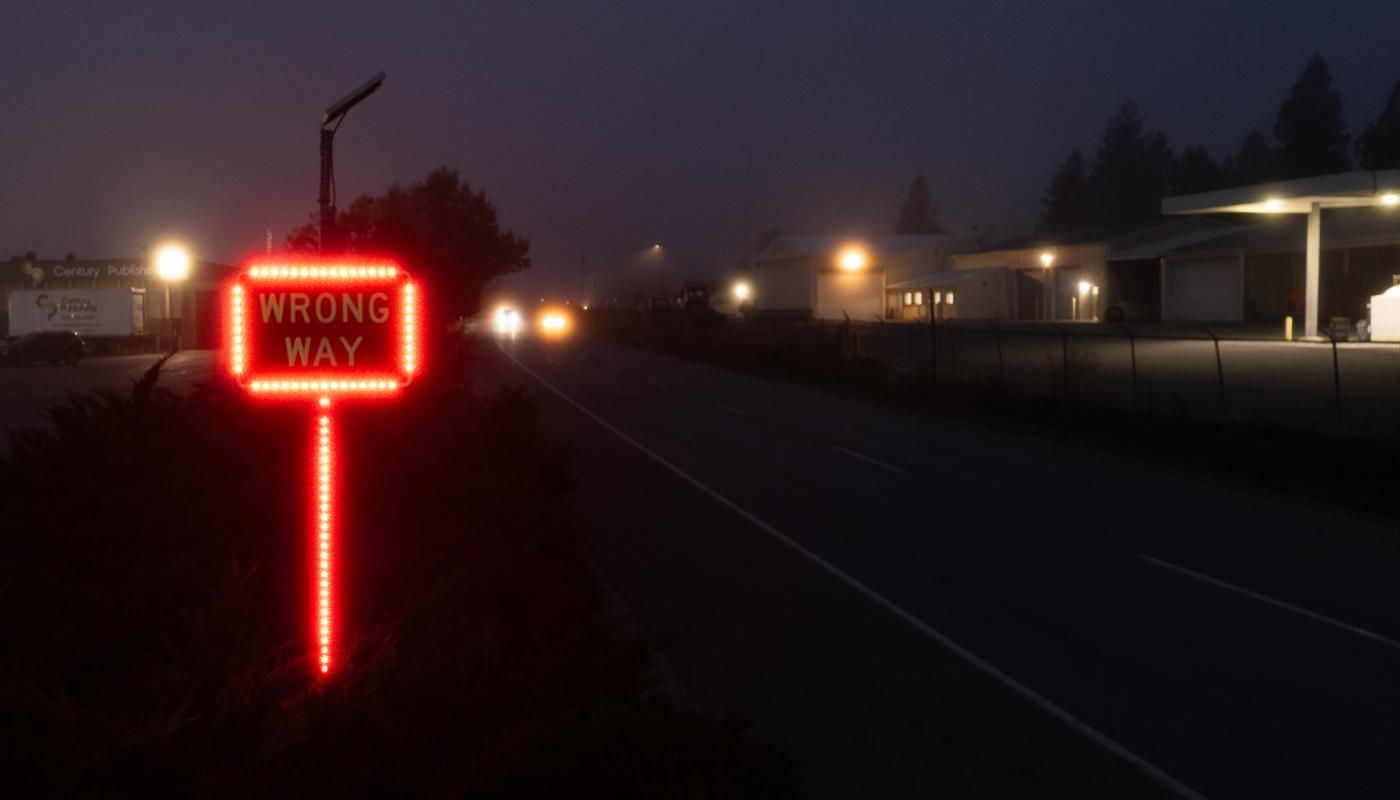Abstract:
This study proposes a comprehensive systemic approach to mitigate wrong-way driving incidents, particularly focusing on the typical profile of wrong-way drivers. The recommendations encompass various engineering countermeasures, considering factors such as signage, pavement markings, active warning signs, geometric modifications, and lighting. Statistical data and references to LED lighting and RRFB usage are integrated where applicable.
1. Introduction:
The profile of a typical wrong-way driver, often impaired or disoriented, older, non-local, and driving in dark conditions, underscores the challenge of solely relying on engineering countermeasures. This study advocates for a careful review and a systemic approach to enhance traffic control devices to prevent wrong-way driving incidents.
2. Engineering Recommendations:
2.1 Signing:
- Confirm all DO NOT ENTER (DNE) and WRONG WAY (WW) signs have wide-angle prismatic sheeting (ASTM Type IX or better).
- Modify DNE signs for optimal visibility to potential wrong-way drivers .
- Add additional WW sign below DNE sign assembly, especially where entrance and exit ramps are close together.
- In rural areas with low lighting, incorporate red reflective material to DNE sign posts.
- Add additional DNE and WW signs to long ramps.
- Optional: Add turn movement prohibition signs and ONE WAY signs to DNE assembly.
2.2 Pavement Markings:
- Ensure correct placement of wrong-way arrows on single-lane exit ramps.
- For co-located entrance and exit ramps, add dotted lane extension lines for turning guidance.
Add additional WW arrows to long ramps.
2.3 Active Warning Signs:
- Integrate automated red LED/RRFB to WW signs.
2.4 Geometric Modifications:
- Add channelizing islands.
- Extend raised median.
- Narrow exit ramp terminal throat.
- Widen entrance ramp terminal throat.
2.5 Lighting:
- Review existing lighting configurations for uniformity.
- Emphasize uniform lighting levels, especially in locations prone to wrong-way entries.
3. Statistical Data:
- The study cites a lack of Crash Modification Factors (CMFs) for expected crash reductions related to wrong-way driving improvements.
- Recommendations are based on literature review, human factors work, and field visits to interchanges on I-5 in Region 3.
4. Additional Treatments for High-Risk Locations:
4.1 LED and RRFB Beacons on Wrong Way Sign:
- Consider moderate-cost countermeasures, such as flashing LED or beacons, on WW and DNE signs for improved visibility, citing effectiveness in deterring wrong-way driving maneuvers.
4.2 Modify and Enhance Guide and Route Finding Signing:
- Ensure appropriate guide signs are present at ramp terminals to inform drivers about correct routes.
4.3 Lighting:
- Emphasize the importance of uniform lighting levels at entrance and exit ramps, particularly in areas prone to wrong-way entries.
Conclusion:
The recommended systemic package aims to provide multiple cues to prevent wrong-way movements, integrating a data-driven approach with a focus on visibility, signage optimization, and additional measures for high-risk locations. The study underscores the need for careful consideration of each interchange to enhance overall safety.
